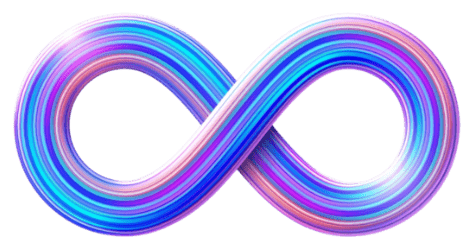now playing:
- main
- 1
- 2
- 3
- For members4
- For members5
- For members6
- For members7
- For members8
- For members9
- For members10
more...
More
- Slipknot StyleLEVEL 4Slipknot style and their way of doing some really heavy and aggressive cool riffs! Lots of palm muting, harmonics and asymmetric rhythmic groupings in here.
- Slipknot Style - AdvancedLEVEL 6Let's explore Slipknot's style on a more advanced level. We're going to use natural harmonics, asymetric rhythms, thrills and palm muting.
- Satch StyleLEVEL 5Let's play some whammy / wah stuff!
- Pillar StyleLEVEL 4Rhythm oriented lesson in the style of the christian metal band Pillar.
- Sepultura StyleLEVEL 3Brazilian band: Sepultura!
- TesseracT StyleLEVEL 5Djent/progressive lesson in the style of Tesseract.
- Millencolin StyleLEVEL 4Lesson based on a popular Swedish Punk Rock band called Millencolin.
- Trivium StyleLEVEL 6Lesson based on a powerful Metalcore band from Orlando, Florida called "Trivium".
- Clutch StyleLEVEL 3In this lesson I cover the southern vibes of the stoner rock band Clutch.
more
easier
Feedback
 mroberts7028th June 2022
mroberts7028th June 2022Awesomeness as always!
 Darius Wave1st September 2021
Darius Wave1st September 2021Thank you
 Hope to see some more of my lessons in your rec takes
Hope to see some more of my lessons in your rec takes 
 Manu RASSE28th August 2021
Manu RASSE28th August 2021Hi Darius
So perfect.
Always a pleasure to see and hear your playing. Darius Wave23rd August 2021
Darius Wave23rd August 2021Thank You all for kind comments on my lesson

Tlabella20th August 2021
Cool riffs and ideas. I love it too!!!
 Monica Gheorghevici19th August 2021
Monica Gheorghevici19th August 2021Awesome lesson Darek!!! I love how cool sounds the pinch harmonics

Practicing Peers
- Total views: 0
- Member views: 0
- Guest views: 0
- Lesson
- My notes
Welcome to the Slipknot Style lesson!
Lesson focused on a rhythm (riffs) playing in the style of one of most iconic bands - Slipknot. Combines strong picking, palm muting, strumming (downwards) and pinch harmonics. Inspiration taken form the song "Psychosocial". This band has a very wide range of both - tonality and compositions. I love how they combine different influences and how they keep up with evolution of heavy music, being a great crossover between rock and metal styles.
Guitar was recorded as double. One take for left channel and another take for right channel. This is how rock backing guitars are made on most of rock and metal album for decades now. It helps to partially compensate the lack of energy that a single recorded guitar has, compared to what you hear straight from the amp. It makes the feel of "guitar wall" while you actualyl hear a single guitar part recorded. It is not the same as simple copy/paste from L to R! Doubletracking is a great way to self-check of your skills. All flaws will be exposed as little differences between both guitars(L + R).
Useful tips:
How to make palm muting - simply touch low strings with your soft part of the right palm. Spend some time to find a sweet spot moving your palm left and right across the strings. Proper palm muting should have very short sustain, a lot of percussive sound and that specific low boom for a very short moment, right after the hit. From the other side if You move your hand too far to the left, your sound will stay percussive, but will loose an information of what notes are being played, and will loose some of the low boost as well. You also need to find a sweet spot of palm pressure to the strings.
Make sure to use bridge pickup position. It's recommended to have humbucker pickup - it handles more distortion with less noise and it's much more tight/focused in the midrange.
Proper amount of gain (only as much as necessary) will be critical to keep things clear and tight. Too much gain will destroy good separation between notes, and will make the whole riffing more blurry. Too much gain can cause less effort from player himself, and will affect the overall profit, that could have been taken from the lesson.
Gear used (in order of connection chain placement):
1. Hufschmid Helldunkel guitar with EMG pickups (81,89)
2. RME Babyface Pro FS interface (input gain: +4dBu/5.5)
3. Poulin Legion plug-in (green channel, lead mode, default eq and input settings)
4. Kefir impulse loader (mix 100%) - You can use NadIR instead for 64bit DAW version.
5. Impulse - Ownhammer FMAN412 V30B 414-00
Tuning - Drop B
Backing track progression (according to fret layout):
4/4
D5 | D5 | D5 | D5 Eb5 F5 Gb5 G5 |
D5 | D5 | D5 | D5 Eb5 F5 Gb5 G5 |
D5 Eb5 C5 D5 | D5 Eb5 F5 | D5 Eb5 C5 D5 | D5 Bb5 A5 |
D5 Eb5 C5 D5 | D5 Eb5 F5 | D5 Eb5 C5 D5 | D5 Bb5 A5 |
G5 F5 G5 A5 | Bb5 A5 | G5 F5 G5 A5 | Bb5 A5 |
G5 F5 G5 A5 | Bb5 A5 | G5 F5 G5 A5 | Bb5 A5 |
G5 | Bb5 | D5 | F5 | G5 | Eb5 |
D5 | D5 F5 G5 | D5 | D5 G5 Ab5 |
D5 | D5 Ab5 A5 | D5 | D5 F5 D5 ||
Tempo: Main song tempo is 130 bpm. There are also backing tracks available at 40, 60, 80, 100 and 130 bpm.
Time signature:4/4
Scales used in this lesson (according to fret layout, not the tuning!):
D blues scale

D minor scale

Scrubbing / forward / rewind: arrow right, arrow left keys
Jump to start: Home or `s` , you can also click/tap the lesson part again (the numbers above player)
Go to next part: PageUP or End.
Volume: ArrowUp / ArrowDown keys
Go to any part: Number keys (combinations also possible)
Pause or play: `k` or space key
Fullscreen: `f`, esc to close
Increase / decrease speed : `+` or `-`
Jump to start: Home or `s` , you can also click/tap the lesson part again (the numbers above player)
Go to next part: PageUP or End.
Volume: ArrowUp / ArrowDown keys
Go to any part: Number keys (combinations also possible)
Pause or play: `k` or space key
Fullscreen: `f`, esc to close
Increase / decrease speed : `+` or `-`







